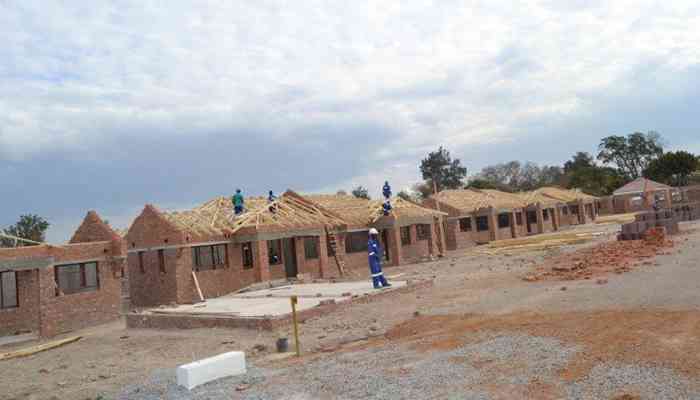
Zimbabwe’s housing backlog is barrelling.
But for over a decade, authorities have claimed 1,2 million people are on councils’ waiting lists, looking forward for their turn to be allocated stands.
This figure cannot be static.
But, typical of authorities, they are massaging the statistics for political gain.
They are determined to give the impression that efforts are underway to construct descent houses for everyone.
The population figures have risen to about 16 million now, from around 13 million in 2012. The flood of people from rural communities fleeing diminishing opportunities has been amplified by an escalation of economic malaise. With youths pouring into urban areas, fresh pressures to construct housing units have been exerted on local authorities.
Housing market dynamics on the domestic front are also being influenced by demand from Zimbabweans who have fled prolonged turbulences back home to seek respite in other countries.
Now, they are trooping back to build their own units. There is potential for a Zimbabwean housing market boom — which can set the tone for construction industry recovery and job creation. The tragedy is, headwinds still haunt this sector. As a report by Integrated Properties (IP) warned last week, exponential housing demand has been dealt a blow by the collapse of mortgage markets.
- Mavhunga puts DeMbare into Chibuku quarterfinals
- Bulls to charge into Zimbabwe gold stocks
- Ndiraya concerned as goals dry up
- Letters: How solar power is transforming African farms
Keep Reading
Many lenders collapsed during the wave of bank failures between 2004 and 2015.
Those still standing today are either too weak or cautious to lend, dissuaded by damaging currency flip flops and other factors.
Headwinds created by policymaking blunders and firefighting authorities have complicated an already desperate situation.
In its report, which analysed property market trends in 2023, IP explained how long-term financial planning has been derailed by the battered currency.
Setbacks have also been encountered in Zimbabwe dollar indexed mortgages, which have been abandoned banks. But the majority still earn in the free falling Zimbabwe dollar.
It is a jigsaw puzzle. There has been no respite on US dollar indexed mortgages either.
They remain hard to access, as high interest rates continue to unsettle prospective home seekers. Demand for mortgages remains high, but supply remains depressed.
“The 2024 Zimbabwean mortgage market is expected to remain challenging, characterised by limited access, high costs, and uncertainty,” IP said.
“The presence of multiple currencies in circulation creates uncertainty and hampers long-term financial planning, making banks reluctant to offer long-term mortgage loans, and close to none in local currency. Moreover, USD lending rates ranging from 12% per annum on a short tenure (three to five years) and a high initial deposit framework (50% of property value) renders mortgages prohibitive to borrower.”
Banks are not the problem. The problem lies with authorities who have been reluctant to tackle the myriad crises haunting the economy so that lenders can return to markets with confidence.











